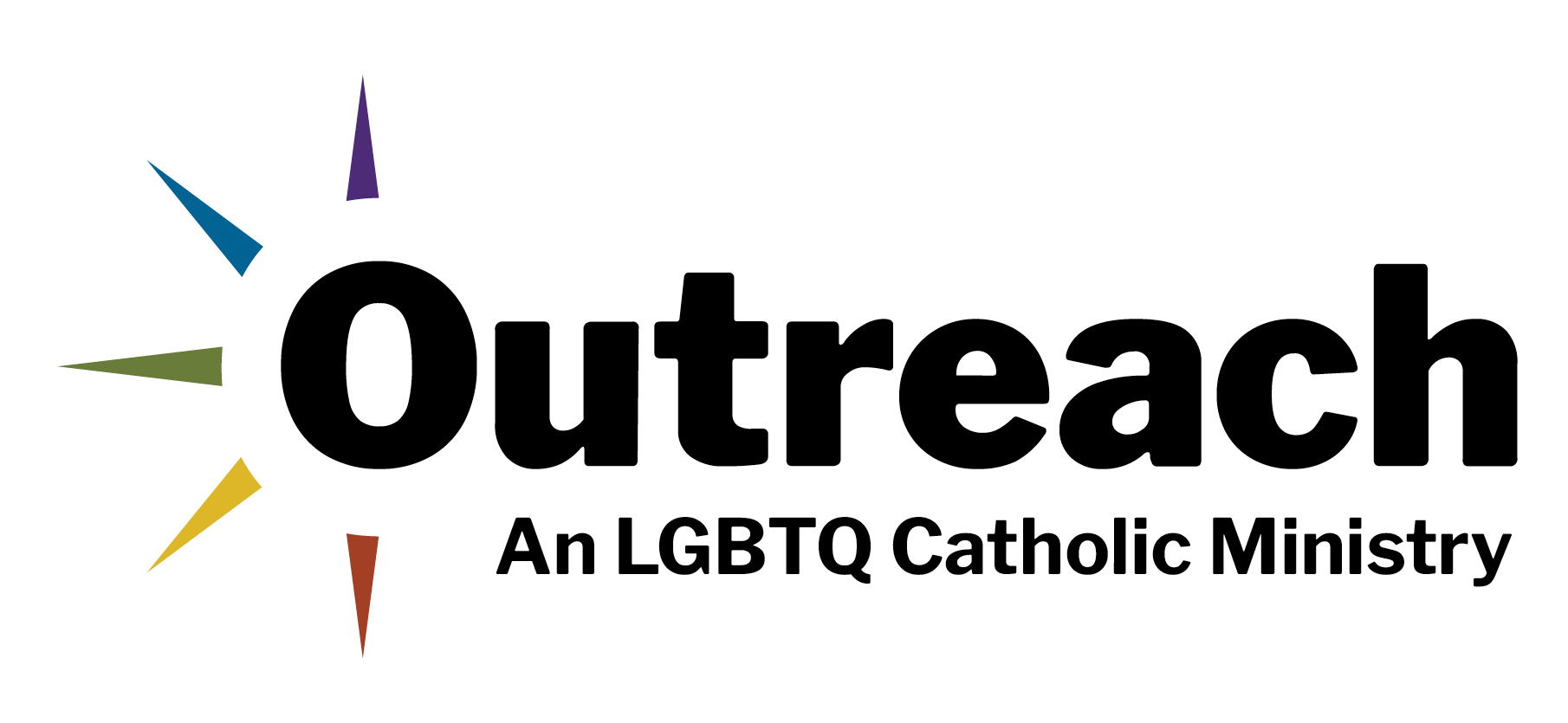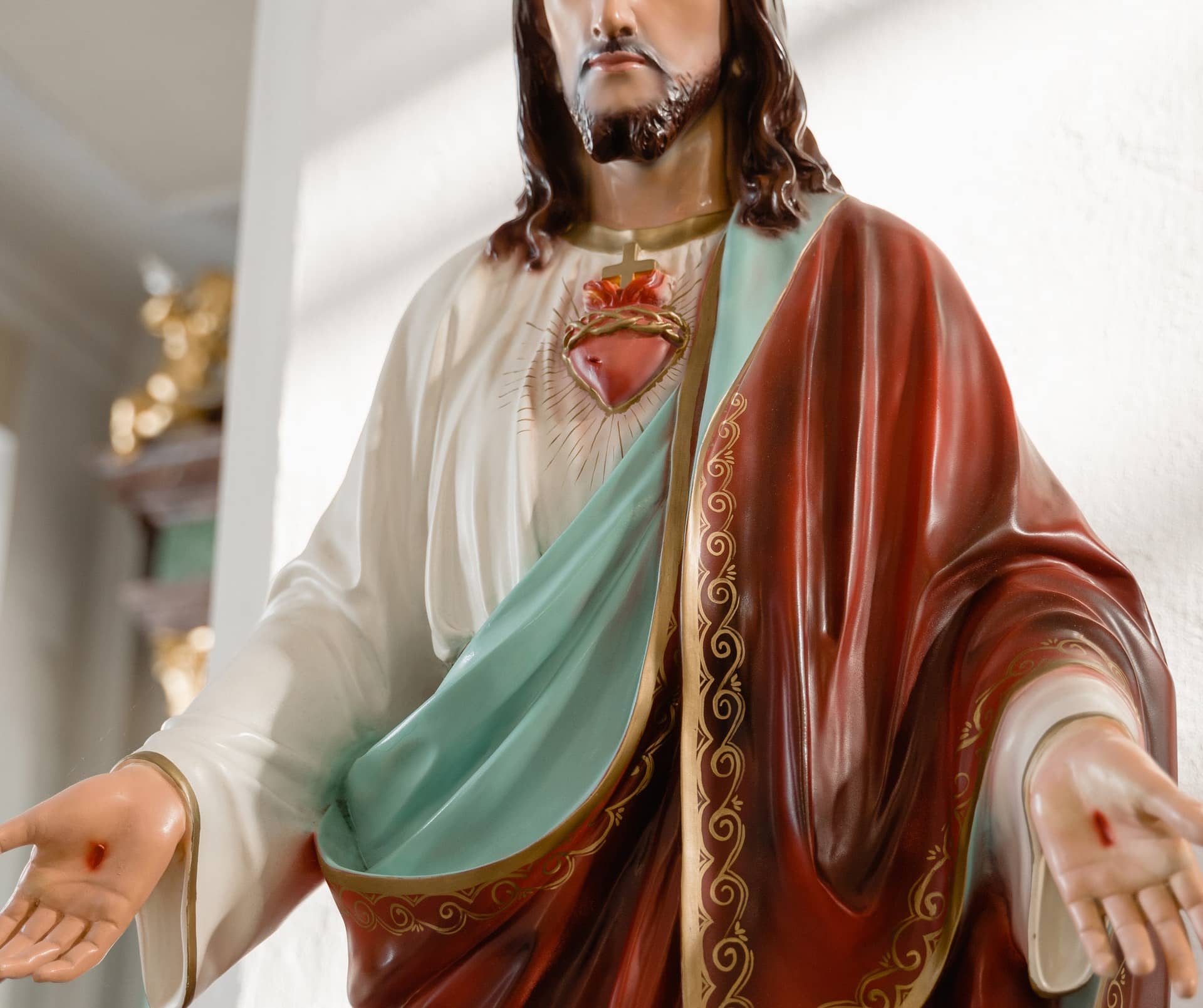Every June the same thing happens. I will write something about June as the Month of the Sacred Heart, when Catholics focus on the way that Jesus loves, and a few LGBTQ people will ask, “What about Pride Month?” Or, more frequently, I will post something about Pride Month, when LGBTQ people mark their place in society, and some Catholics will ask, “What about the Sacred Heart?” Often the latter question is asked in anger, saying how heretical, blasphemous or disgusting it is that someone would mention Pride Month during the month of the Sacred Heart.
But, as I see it, the two events are not contradictory but complementary. Because each tells us something about how Jesus loves. And it is providential that both are marked in June.
The Sacred Heart of Jesus
June is the month of the Sacred Heart because it is the month in which we celebrate the Feast of the Sacred Heart, which falls on the Second Sunday after Pentecost.
Ever since I entered the Jesuit novitiate 30 years ago and heard the story of the Sacred Heart, I have counted it as one of my fondest devotions. (I wrote about it in my book Awake My Soul, on Catholic devotions.)
My devotion started very early in my life as a Jesuit. A few months into my novitiate, I was sent to work with Mother Teresa’s Sisters in Kingston, Jamaica, and live with the Jesuits in the city, for four months. In the courtyard of the Jesuit residence was an immense concrete statue of Jesus pointing to his exposed heart. So I saw, and prayed to, the Sacred Heart every day.
As many know, this popular devotion began with the mystical visions of Jesus and his Sacred Heart as revealed to St. Margaret Mary Alacoque (1647-1690), a Visitation Sister who was living in the French town of Paray-le-Monial, France.
As is sometimes the case in religious orders, the sisters in her community were highly doubtful about her reported visions. At one point Margaret Mary, in desperation, was told in prayer that God would send her “his faithful servant and perfect friend.” Shortly afterwards, the mild-mannered St. Claude la Colombière (1641-1682), a Jesuit priest living nearby, was assigned to serve as her spiritual director. When Margaret Mary first met Claude, she heard an interior voice tell her, “This is he whom I have sent to you.” (Perfect Friend is the title of a wonderful biography of Claude that I read while in the novitiate.)
Later, Margaret Mary would have a vision that showed their two hearts (hers and Claude’s) united with the heart of Jesus.
From that point the two worked together to spread the devotion, which became strongly associated with the Jesuits, who promoted it with vigor in the following centuries. (Their near contemporary and compatriot, St. John Eudes, also spread devotion to the Sacred Heart.)
As the devotion flourished, the paintings, mosaics, sculptures and other imagery so familiar to Catholics today proliferated. So did parishes, hospitals, retreat centers, schools and universities named in its honor. Everything you know that is named “Sacred Heart” (including the great church of Sacré Coeur in Paris) stems from these two people—and from Jesus’s own heart of course.
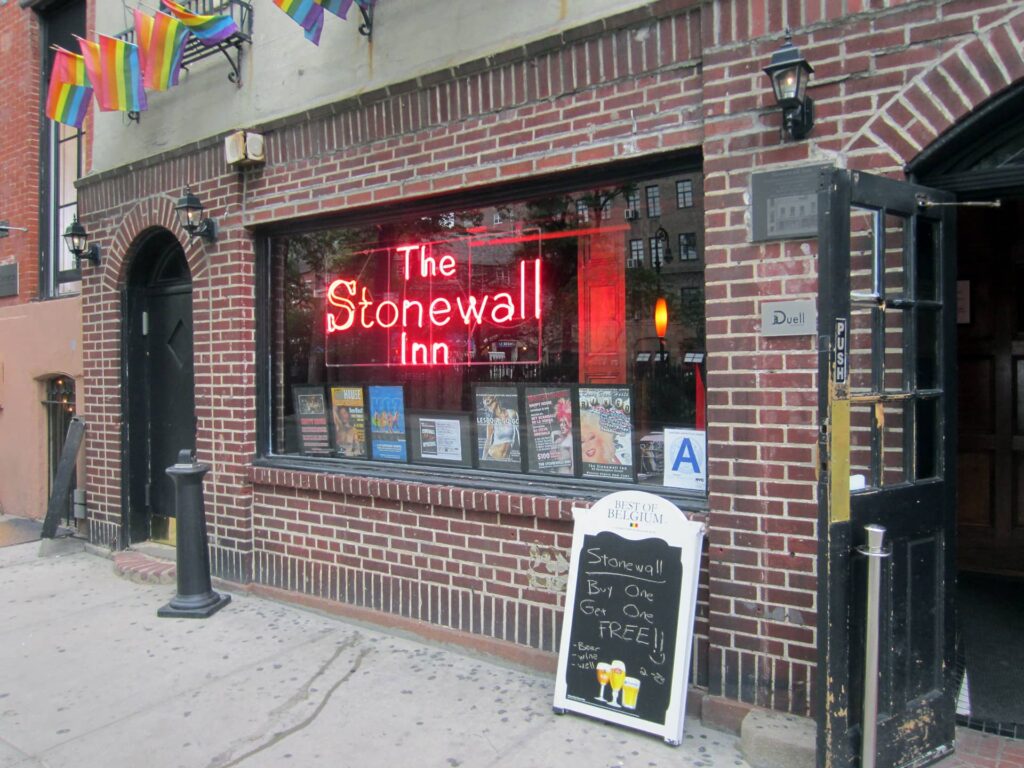
Pride month
Pride Month began as a commemoration of the Stonewall riots, when on June 28, 1969, police raided a popular gay bar in Greenwich Village neighborhood of New York (called the Stonewall Inn) and hauled out many patrons, leading to several days of protests. It is seen as a landmark event in LGBTQ history. Today, Pride Month is celebrated around the world, with some cities holding “Pride parades” on the final weekend of June. As it happens, they sometimes occur on or around the Feast of the Sacred Heart of Jesus.
The most common objection to mentioning Pride Month during the Month of the Sacred Heart is two-fold.
The first objection is that pride is a sin, and sin should never be celebrated. But as I’ve written, it’s important to remember that there are two kinds of pride. The first is the satisfaction that can come from your own accomplishments. This can turn into vanity, which is something to avoid. That brand of pride says, “Look how great I am!” It’s the opposite of humility, a key virtue in the Christian life.
But the second kind of pride is a consciousness of one’s own human dignity. That’s closer to what Pride Month is meant to be for the LGBTQ community: a recognition of the human dignity of a group of people who have, for centuries, been treated with contempt, rejection and violence.
The other, more common, objection is that LGBTQ people are simply sinful or are always in conflict with church teaching. But that’s false for two reasons. To begin with, it ignores the fact that many LGBTQ people aren’t doing anything at all against church teaching. Imagine a young LGBTQ person who is not in any sort of sexual relationship but simply wants to be loved and accepted. Where is the sin? Second, it ignores the fact that all of us are imperfect. Who among us is in conformity in all parts of our lives with church teaching on all matters?
Pride Month, as I see it, is more about human dignity than about personal vanity. It’s about marking the place in society for a group of people who have long been excluded.
As an aside, that doesn’t mean that you have to like every event or parade or float or meme during Pride Month. It does mean, however, that you’re invited to see the human dignity of each LGBTQ person in a special way during those 30 days.
There are also some surprising resonances between the story of Sacred Heart and the story of Pride Month.
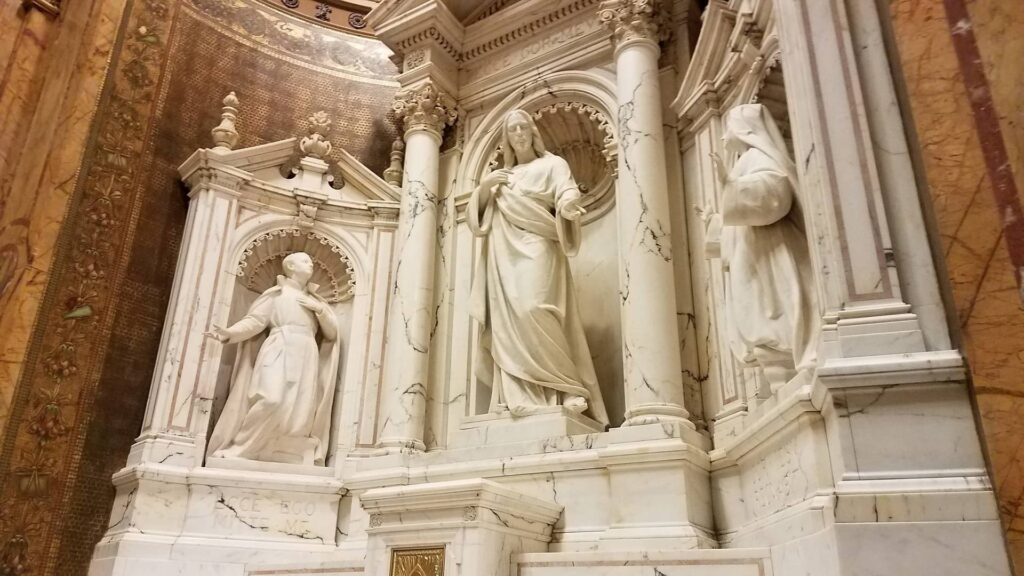
Saints Margaret and Claude
As I mentioned, Margaret Mary was initially not believed by the sisters in her convent and was also unable to convince several theologians about the authenticity of her mystical experiences. She suffered a great deal from the responses from her sisters in particular. As for Claude, he wasn’t always held in high regard by his brothers either. Jesuit communities used to have house historians who would record the events of the community life. The final few days before Claude’s death were recorded as follows by the house historian: “Nothing worthy of note.”
In both Margaret Mary and Claude, we see people who understood what it meant to be rejected or sidelined. Moreover, they understood what it meant to be faithful to who they were, to what they had seen and to how God was at work in their inner lives, experiences that will resonate with many LGBTQ people today.
At heart, then, both of these commemorations have to do with love. The Sacred Heart reminds us how Jesus loved: fully, openly, radically, to the point of his death. In the countless images of the Sacred Heart, his own heart is always exposed: bloody, vulnerable, close to us.
Pride is about love too. Not simply the love that LGBTQ people have for one another, but the love that the society has for them, and the love that God has for them.
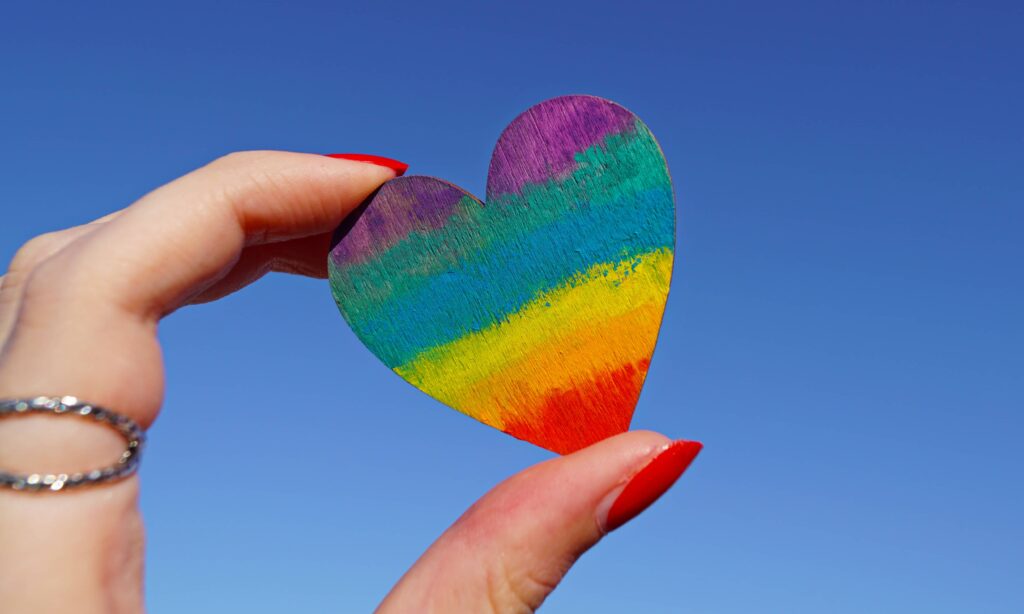
How Jesus loves
Moreover, I see Pride Month as revealing the kind of love that God has for LGBTQ people specifically. When we look at the Gospels, whom do we see Jesus reaching out to most often? Those on the margins.
In the story of the Roman centurion, Jesus heals a soldier’s beloved servant in the Jewish fishing town of Capernaum (Mt 8:5-13; Lk 7:1-10). But notice that the centurion is not only not Jewish; he is not even a monotheist. He most likely believes in the multiple Roman gods. He is, in short, a pagan. Even though the townspeople tell Jesus that he built their synagogue (the ruins of which can still be seen), the centurion is probably as far outside the Jewish milieu as possible. Nonetheless, Jesus reaches out to him with a heartfelt love, praises his faith and heals his servant. It is an early example of the way that Jesus loves.
Or consider Jesus’s beautiful encounter with the Samaritan woman drawing water from a well, as recounted in the Gospel of John (4:1-42). She has been married five times and is living with a man who is not her husband. In other words, she has an irregular sexual past and present. Again, Jesus treats her with infinite love, engaging with her in one of the longest conversations recorded in the Gospels, revealing himself to her as the “Living Water” and commissioning her to spread the Good News among the Samaritan people. Here Jesus’s heart is once again on display.
Finally, in the story of Zacchaeus, a wealthy tax collector most likely hated by the townspeople in Jericho for his collusion with Roman authorities, Jesus invites himself to the man’s house, a sign of public welcome—and love (Lk 19:1-10). Luke’s Gospel tells us that Jesus offers Zacchaeus welcome despite the “grumbling” of the crowd. His Sacred Heart is too big to be bothered by grumbling.
In all these situations, we see the activity of the Sacred Heart: a heart ready to go beyond boundaries, beyond prejudices and beyond hatreds, to welcome those living on the margins.
Think of how often LGBTQ people are still forced to live on the margins of both society and the church. In ten countries you can be executed for being gay. In some 70 others you can be jailed. Even in the West, LGBTQ people are regularly harassed, beaten and killed. They are one of the most marginalized and despised groups in the world today. And think of how often they are rejected and sidelined in the church today. Who is more on the margins in the church?
Where would the Sacred Heart be today? It would be poured out in love on these people who seek love and acceptance. So in the end the two celebrations—the Month of the Sacred Heart and Pride Month—not only are not in conflict, but are deeply complementary. One shows us shows us how Jesus loved. The other shows us whom Jesus calls us to love.
